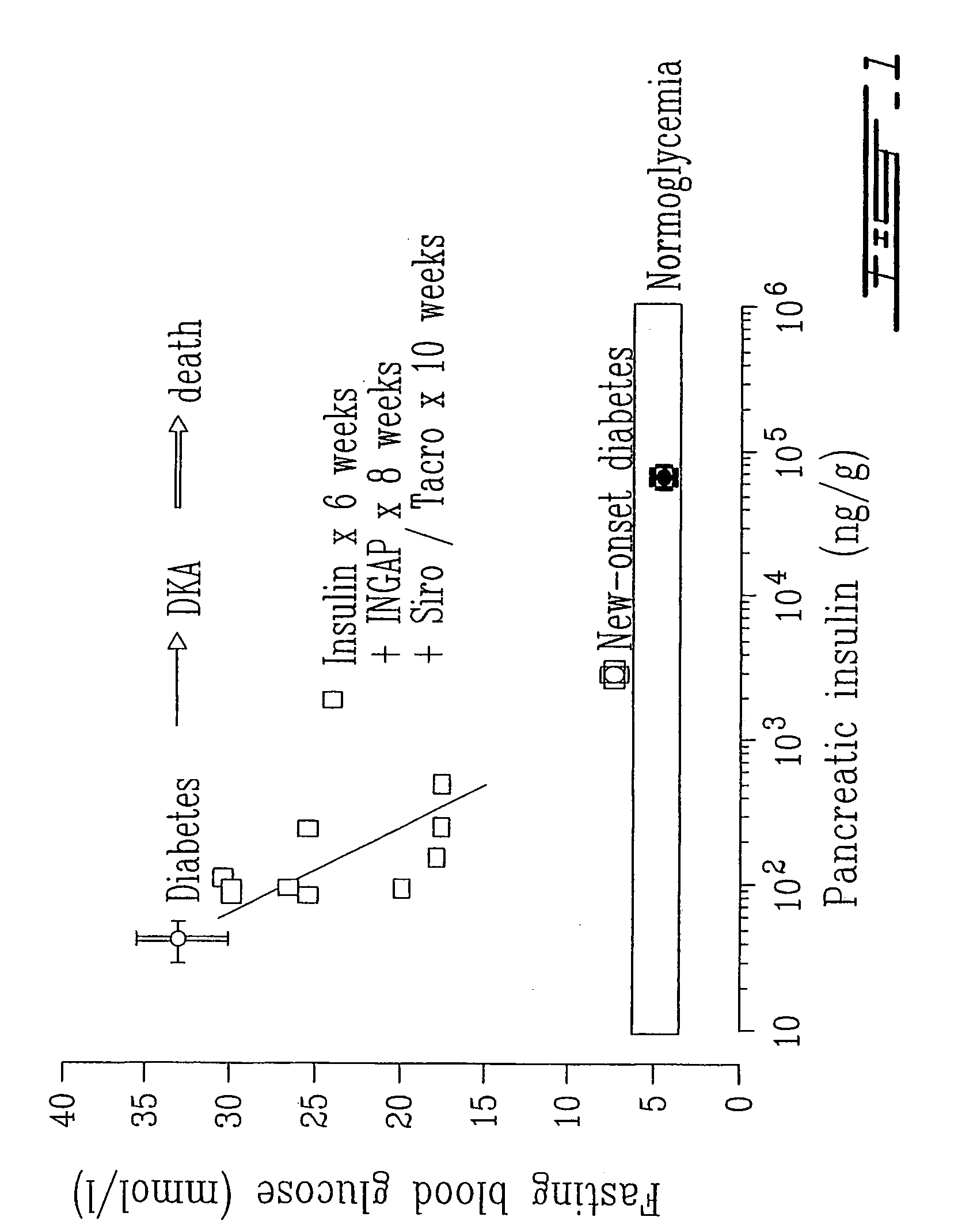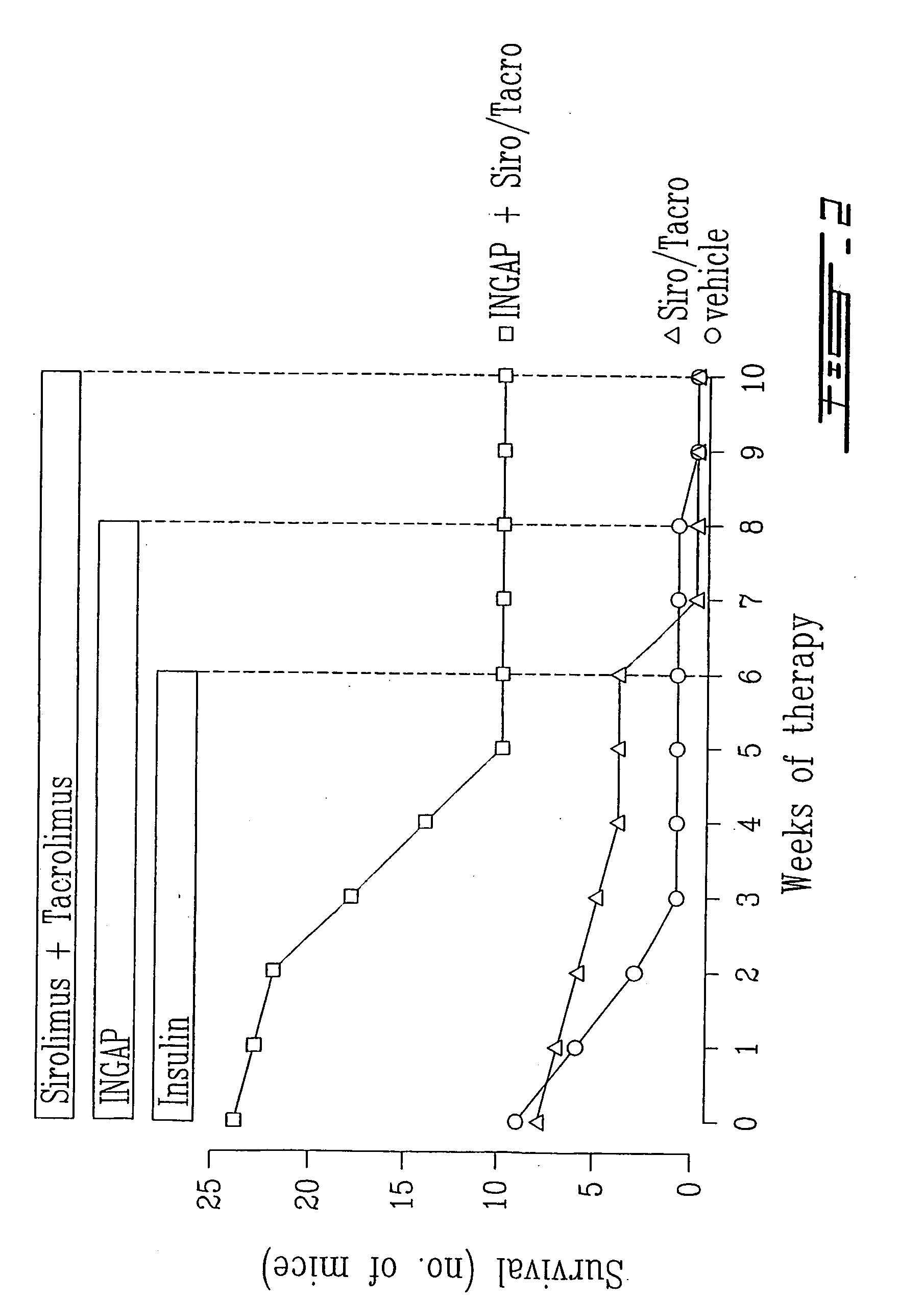Use of ingap for reversing diabetes
a technology of ingap and ingap, which is applied in the field of diabetes reversal, can solve the problems of affecting the survival of patients, and affecting the effect of autoimmune destruction, so as to prevent autoimmune destruction
- Summary
- Abstract
- Description
- Claims
- Application Information
AI Technical Summary
Benefits of technology
Problems solved by technology
Method used
Image
Examples
Embodiment Construction
[0051] In accordance with the present invention, there is provided a method for the induction of in vivo islet cell neogenesis and new islet formation from cells derived from islet cell stem / progenitor cells in the adult pancreas, associated with the self-regulated expansion of such cells and the development of a mature glucose-sensing mechanism, leading to the reversal of an established diabetic state.
[0052] In accordance with one embodiment of the present invention, the technology is based on the understanding of autoimmune diabetes being a disease state characterized by a loss of an insulin-producing cell mass as a result of a pre-existing or ongoing autoimmune destruction of such cells, incorporating the following components that are necessary and sufficient for the successful reversal of a diabetic state by the induction of islet cell neogenesis and new islet formation: [0053] 1. a stimulus for the induction of islet cell neogenesis and new islet formation from pre-existing pa...
PUM
 Login to View More
Login to View More Abstract
Description
Claims
Application Information
 Login to View More
Login to View More - R&D
- Intellectual Property
- Life Sciences
- Materials
- Tech Scout
- Unparalleled Data Quality
- Higher Quality Content
- 60% Fewer Hallucinations
Browse by: Latest US Patents, China's latest patents, Technical Efficacy Thesaurus, Application Domain, Technology Topic, Popular Technical Reports.
© 2025 PatSnap. All rights reserved.Legal|Privacy policy|Modern Slavery Act Transparency Statement|Sitemap|About US| Contact US: help@patsnap.com


